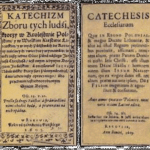I’m enjoying our biggest stretch of vacation time at home before camping and conferencing and sesshining later in the month. And then up to the Boundary Waters for canoeing in August.
This down time has given me the chance to enjoy my hobby of reading scholarly Zen stuff, savoring David Riggs’ piece, “The Zen of Books and Practice: The Life of Menzan Zuiho and His Reformation of Soto Zen,” in the new anthology by Heine and Wright, Zen Masters.
The Menzan presented by Riggs breaks out of the ideas that I had about Menzan. No da, eh?
Contrary to what I’d picked up about him somewhere, Menzan wasn’t “opposed” to Rinzai but to the use of the “head word” koan method specifically when students were “encouraged” through excessive means like beatings. “This is nothing but corporal punishment,” says Menzan. Amen.
Also, Menzan stayed and taught at many Rinzai temples through his later life and wrote commentaries on The Book of Serenity and The Blue Cliff Record.
The current rivalry between Soto and Rinzai often seems to be projected backward on the traditions even though it simply doesn’t fit the history. And because the Japanese Soto and Rinzai have grown apart in the last couple hundred years (sometimes using each other as foils to rally the faithful), that’s no reason for us to carry on old family feuds.
Had Menzan’s views won out, the brutal Eiheiji documented in Eat, Sleep, Sit: My Year at Japan’s Most Rigorous Zen Temple, would have been a kinder and gentler place with foot-long bamboo sticks with padding on the ends for gently poking sleeping monks, rather than yard-long wooden kyosaku used to deliver intensive blows to the shoulders.
Further, I found that Menzan and Katagiri may have agreed about mysticism. In one of Roshi’s last talks, he encouraged us to offer deep reflection about human life to the modern world rather than arcane rituals. Specifically, about the precepts, “Menzan took the position that as important as it was to receive the precepts, the taking was a confirmation of practice, not its completion” (p. 169).
That may seem obvious to you but in contemporary Soto the taking of the precepts is often presented as akin to an esoteric ritual without ethical implications for practice.
Likewise, probably the most significant aspect of Riggs’ piece for me has been in the reflections that it has stimulated about our contemporary Soto scene.
Menzan, you see, was one of the early teachers who advocated looking back to Dogen and re-creating the actual practice of Soto Zen through careful study of the Dogen’s writings. Sonno, Menzan’s main teacher, told him to “…look upon the face of Dogen, and not the face of others.”
This spirit is that I was steeped in when studying with Katagiri Roshi and so have since, for example, encouraged the Soto Zen Buddhist Association to recognize Dogen’s works as source texts (without success).
I still think there are great benefits in Dogen study but this article has made me more keenly aware of one of the faults of that approach. If we look back at Dogen too much, our own creativity is stymied which is a odd thing given how Dogen, almost word-by-word, models the creative capacity of the awakened mind.
Another implication from looking back too much is that we don’t see the more current guides of living the dharma. For example, I hear that the Tibetans value more recent commentaries more than the ancient ones because they are more current applications of dharma principles.
In the same vein, after one of the talks that I gave about Keep Me In Your Heart While, someone asked if the book had gone through peer review. “Dang,” I thought, “that’s a good idea!”
When we hold that which is far away as more dear, we also tend to overlook the dharma that is close at hand. If we implemented a system of peer review, we’d need to take each other’s work much more seriously and I bet we’d improve the quality of what was put out there.
To close, here’s Riggs’s introductory paragraph that summarizes his essay:
Menzan Zuiho (1683-1769) was one of the most illustrious writers and reformers of the Tokugawa period. During this era, there were major changes in Zen practice as well as a wide-ranging reevaluation of Buddhist doctrine. Menzan was probably the most creative and prolific of all the Soto Zen writers of the time. His approach to learning and his emphasis on historical sources continue to this day to be characteristic of the Soto school, and his writings about doctrine and details of monastic practice are the foundation of the contemporary school. At the same time, Menzan was a popular teacher of Buddhism to lay men and women, and a revered Zen master who led strict training sessions for many years. He succeeded in training so many disciples that he gave dharma transmission to twenty-seven of them, many times the norm and more than all except one other Soto teacher. Menzan took a strikingly moderate attitude toward practice by, for example, adapting a more humane and mainstream outlook toward precepts. He was very critical of an excess of zeal, whether through use of the stick in the meditation hall or through excessive effort leading to the risk of mental illness. Many of these more moderate positions were not ultimately accepted in the Soto mainstream, so in spite of influence on the later school, some of his positions were rejected.












